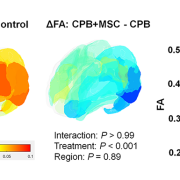Pediatric hospitals underutilize systems to get at social challenges impacting health

Physicians treating hospitalized children rarely use a coding system established in 2015 for flagging social challenges and stressors that may be impacting patient health, according to new research from Children’s National Hospital.
Physicians treating hospitalized children rarely use a coding system established in 2015 for flagging social challenges and stressors that may be impacting patient health, according to new research from Children’s National Hospital published in Pediatrics. Known as social determinants of health (SDOH), these factors include food insecurity, homelessness and adverse childhood events like substance abuse at home, and they can greatly affect a child’s well-being.
“We only get so many touchpoints with our patients,” said Kaitlyn McQuistion, M.D., pediatric hospital medicine fellow at Children’s National and co-lead author of the paper. “Our research shows the screening itself provides valuable insight into our patients, making identification an important part of inpatient and post-discharge care. With this information, doctors can help families tap into social workers, community supports and other resources aimed at providing a more holistic approach to child health.”
The big picture
The American Academy of Pediatrics advises screening for unmet social needs and using the codes laid out in the International Classification of Disease, 10th Revision (ICD-10), to flag risk factors for some of a hospital’s most vulnerable patients. In 2018, the American Hospital Association (AHA) clarified that the coding can be added by any healthcare professional accessing the chart, including nurses, social workers, case managers and physicians. The study looked at data from 4,000 hospitals in 48 states and the District of Columbia and found that use of the codes has remained low, even with the AHA’s clarification.
In practice, physicians know that screening and documentation are the essential first steps to help families find resources. Yet less than 2% of pediatric inpatients were coded as needing support. Most commonly, “problems related to upbringing” – a broad category indicating social needs and adverse childhood events – was used.
What’s ahead
Some providers are using these SDOH codes, or Z Codes, more often to address and improve health disparities. “Our mental health colleagues and those working with the Native American population, in particular, are using these tools more often to capture and disseminate critical information related to their patients’ social needs,” said Stacey Stokes, M.D., a hospitalist at Children’s National and co-lead author on the paper. “Their innovative approaches to address and improve health disparities may provide learning opportunities for institutions.”
The researchers said that more work needs to be done to take these successes to other populations, find ways to incentivize this work in billing and ensure that providers have community resources to address the needs that they uncover.
“The ultimate goal of this work is to identify patients with social needs affecting their health and connect them with resources,” said Kavita Parikh, M.D., director for the Research Division of Hospital Medicine. “There are many avenues to explore to find ways to better utilize this tool, including language learning models, improved training and stronger community resources.”











